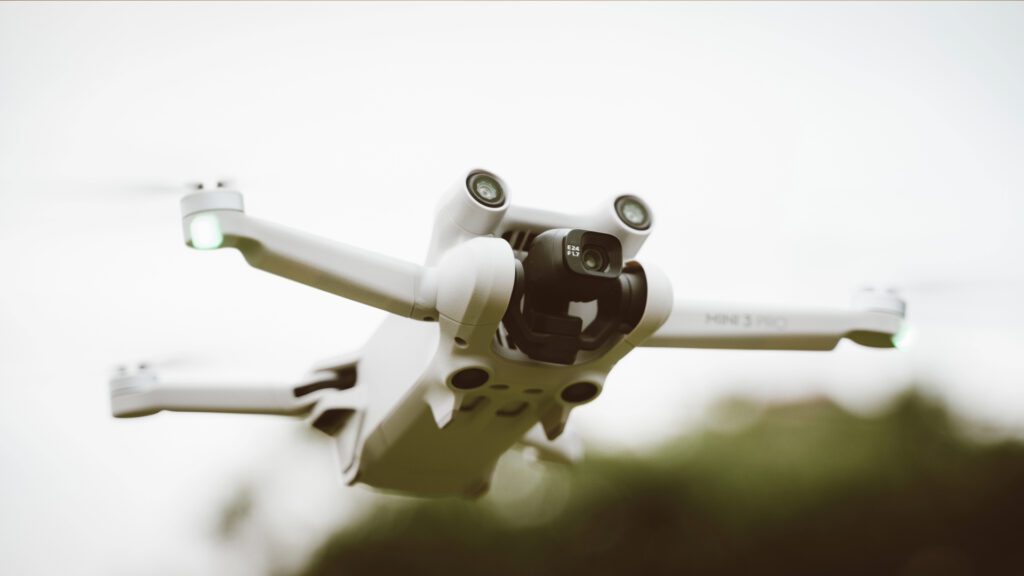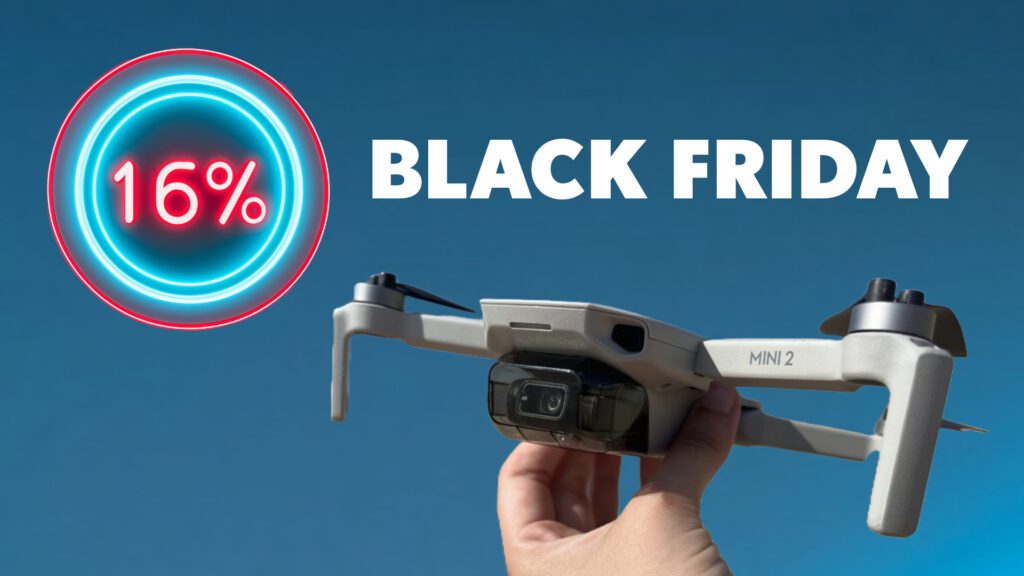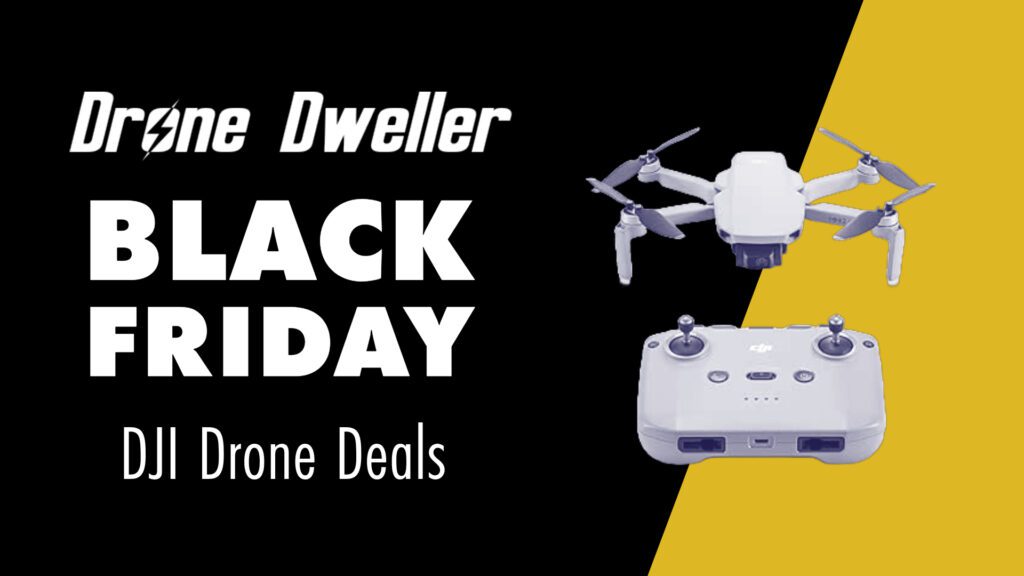If you own a drone, you’ve probably researched and asked the question of whether you can fly drones at night.
After all, flying drones at night can create some unique shots of city nightlife. Whilst commercial drone pilots might need to conduct night inspections with their drones.
Whatever your reasons for wanting to fly drones at night, you need to ensure safety and legal rules are abided by during every step.
In this guide, we’ll cover the legalities around flying drones at night, the safety measures, and the equipment to make drone flying at night an easier process.
Night Time Drone Flight
Flying drones at night and capturing the night lights and night street views can create some unique shots. However, less visibility means more due care and attention are needed for a safe flight. Safety and legalities need to be first understood for flying drones at night.
It’s your responsibility to check with your national or local regulation authority for the legalities behind drone flying at night in your state or county.
Legal Requirements for Flying Drones at Night
Understanding and adhering to local laws is necessary when flying drones at night. Always comply with regulations to avoid legal complications.
The rules for flying drones at night vary from country to country, and region to region.
We’ll explain the rules for flying your drone in both the US and UK. Not that there have been recent updates to flying drones in the EU (EASA flying zone). To see if the regulation changes affect your drone, check out our guide on the new EU DJI drone regulations explained.
Flying drones at night in the US
Before May 17 2021, flying drones at night in the US required an FAA-approved application. This approval was a time-consuming process with some complex terminology, and overall, not very user-friendly.
This was ruled out and now any hobbyist drone pilot can fly their drone at night. The requirement is to follow the FAA regulations as you would flying in daytime. As well as pass The Recreational UAS Safety Test (TRUST).
TRUST is proof of passage if asked by any member of law enforcement or authority whilst flying your drone. The test is free and online and applies to all recreational drone pilots who own a drone under 250 g (0.55 lbs). If you wish to fly your drone at night that weighs over this, you must register your drone through the FAA’s Drone Zone.
That said, if you are flying your drone at night commercially, you will need your Part 107 Remote Pilot Certification.
Flying drones at night in the UK
You can fly drones at night in the UK so long as the Civil Aviation Authority (CAA) regulations are met. This includes having registered your drone with the CAA and getting your Operator ID.
The CAA outlines the rules and regulations for flying drones in UK airspace. This is covered in the CAP722: Unmanned Aircraft System Operations in UK Airspace – Guidance.
These regulations are always subject to change and it is the responsibility of the pilot to keep updated to stay within the legal boundaries of drone flying.
As of November 2022, it states under 2.1.1.2 VLOS operations at night:
The key point here is that you can legally fly drones at night in the UK so long as you adhere to the regulations of daytime flying and maintain VLOS at all times.
Now, VLOS may not be so easy if you are flying your drone at night. It’s worth mentioning that you may need to purchase a light to stick on your drone to enhance drone visibility whilst flying at night.
Best Practices for Flying Drones at Night
Before flying your drone at night, do the pre-flight checks. Night-time drone flying requires extra care and attention – more than daytime. So, taking extra precautions is a must.
Flying at night means all daytime flying rules still apply. This means avoiding flying over overpopulated areas such as festivals or sports events, and flying too low.
Want to get better at flying your drone? Explore our drone flying tips and tricks.
Ensure proper drone lighting
Flying a drone at night poses the main challenge of decreased visibility – both for the drone and its surroundings.
Most drones include green flashing lights already built into the drone itself. However, they are not always clearly visible when flying at night, especially at certain distances. So for added safety, you may want to purchase extra drone strobe lights or LED lights to make the drone easier to spot in the night sky.
Check the weather conditions
Flying your drone in darker conditions means less visibility. You don’t want to worsen visibility and increase crash risk or lose your drone by flying in unfavourable weather conditions. Foggyness and cloudiness conditions aren’t ideal, so make sure that when you fly in clear, dry conditions at night.
Planning to fly your drone over water, check out these flying drone over water tips.
Consider a spotter
Limited visibility means it becomes difficult to spot the drone’s orientation in the sky or any obstacles around it. It’s hard to measure distance, altitude and depth at night and you run the risk of crashing your drone.
Having someone to spot your drone whilst you’re flying gives you that extra support. Having two pairs of eyes is always better than one. Ideally, your spotter should have some awareness of airspace regulations and drones. However, we’ve found having a friend with a good level of situational awareness also does the job just fine!
Learn more about maintaining your drone with these drone maintenance and care tips.
Stay away from crowded or sensitive areas
This is a standard to follow when flying your drone in the daytime. But it is worth mentioning as some drone hobbyists like to fly in certain areas after hours, or film overhead certain night events. When this is done well and safely, you can create some epic night scene shots.
Just make sure what you’re droning is not breaching any local or national airspace regulations. Sensitive wildlife areas or sports events would be off the books unless approved by the appropriate authority. Do your research and spot any potential risks before taking flight.
Useful Accessories for Flying Drones at Night
When we discussed the legalities of flying drones at night in the US and UK, VLOS is emphasised to be strictly adhered to at all times.
DJI drones and most other drones have lights already on the drone so they will be visible when flying at night. However, VLOS can be hard to maintain in very dark conditions where the drone’s light might not be easy to spot.
To increase visibility when flying your drone at night, it’s best to invest in proper LED drone strobe lights.
LED drone strobe lights can be priced around $10 to $40. Spending a bit more on the purchase ensures you get proper LED lights that are either USB-charged or have a good battery life, some cheaper alternatives don’t light up as well and have considerably less battery life.
Please note that these lights can add extra weight to your drone so your drone weight classification may vary, depending on the light that you buy.
Here are our recommendations for drone strobe lights:
High intensity LED light, offering light modes including: strobe, flash, fixed, and strobe/flash. Easily chargeable via a USB port. Easy to use with one single button interface.
Firehouse Technology strobe lights have received a lot of positive feedback from the drone community.
Although on the pricier side, these LED lights offer multi-colour options, easy USB charging, and good battery life. Plus, they’re easy to attach to the underside of your drone. Some models include a remote, allowing the colour of the LED light to be altered from the ground. And other models are extremely light in weight so there’s no risk of your drone changing weight classification.
High intensity LED light that is easy to mount onto any drone. Offers three colours and three patterns of light. Increases visibility up to 3 miles (4.8 km) and a battery life up to 4 hours.
1.5 inch LED light that mounts to all drones of any size. Easy charging with micro-USB cable. Red, white, and green colour options, as well as three flashing modes, for increased visibility. Up to 3 miles visibility and 360 direction.
Offering 10 lighting modes with one switch, HeiyRC increases drone visibility in night conditions. Ensures visibility up to 3.7 miles (6 km). Easily attached to drone by either elastic, rubber bands or velcro pads.
Check out these drone video tips for insights into improving your aerial footage.
Conclusion
Flying drones at night can be a unique way of capturing aerial footage and shots. The proper precautions must be adhered to and the drone should be operated with extra due care and attention.
So, can you fly drones at night? The answer is yes. So long as the general rules of flying a drone in the daytime are adhered to, including flying below 440 ft (120m) Above Ground Level (AGL) and maintaining VLOS at all times. That said, there may be extra restrictions or tests if you are flying your drone at night commercially. In this case, you may want to prepare for extra approval or certifications.
The regulations between countries and regions can vary and it is the responsibility of the drone pilot to keep up to date with these as they are subject to change.
FAQs: Can you fly drones at night?
What are the legal restrictions for flying drones at night?
As long as you are flying your drone at night for recreational purposes, there are no prohibitions to flying drones at night. That said, daytime flying restrictions must still be followed. The main thing to remember when flying drones at night is that you must maintain Visual Line of Sight (VLOS) at all times.
It is the responsibility of the drone pilot to be aware and keep up to date with the local and national regulations for flying drones in their country or region.
Make sure to keep away from crowded, overpopulated areas, and sensitive areas such as wildlife preserves.
How can I enhance visibility when flying drones in the dark?
Most DJI and stock drones come with built-in lights for increased visibility whilst in flight. However, this can sometimes be harder to see in darker conditions. If you want to increase the visibility of drones when flying in the dark, you could look to purchase LED strobe lights to attach to your drone. The prices of drone strobe lights can vary from $10 to $40.
Are there specific drone models designed for night time flights?
Whilst there aren’t specific drone models designed for nighttime flights, some drones are better designed for night operations.
What are the key safety measures to consider before a nighttime drone flight?
Make sure your drone lights or externally-added strobe lights are on and working before your drone takes flight. Ensure that the weather conditions allow you to take off and fly safely. Cloudiness and fogginess can make your drone incredibly hard to spot in dark conditions.
Ensure you have an appropriate battery level before flying your drone at night. The last thing you need is your drone to drop from the skies in the dark.
Avoid flying in crowded areas or events, or instances where you may disturb the peace. Maintain Visual Line of Sight (VLOS) and adhere to your national airspace regulations at all times.
Can I use night vision goggles while operating a drone?
Under FAA and CAA restrictions, drones must be operated with unaided sight – with the exception of glasses. This means drones cannot be operated with the aid of night vision goggles or binoculars.
Are there restrictions on the flight duration for nighttime drone operations?
In both the UK and US, there are no restrictions on the flight duration when flying your drone at night. As long as Visual Line of Sight (VLOS) is always maintained, and the enforced regulations are followed, you can fly your drone at night for as long as you like.








